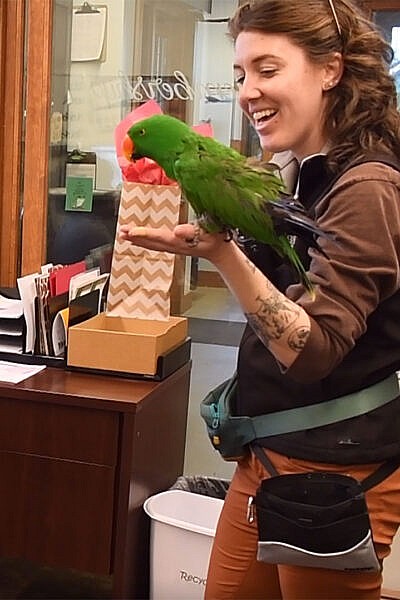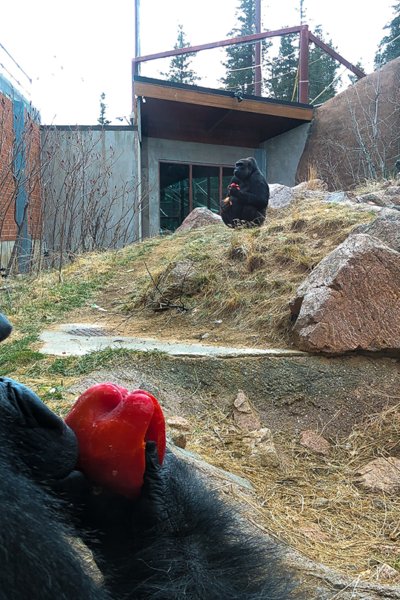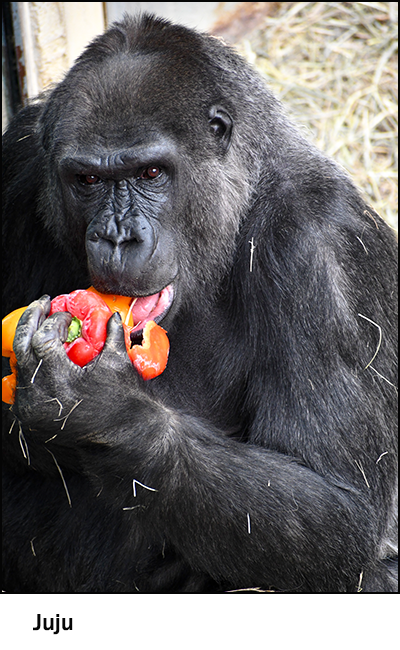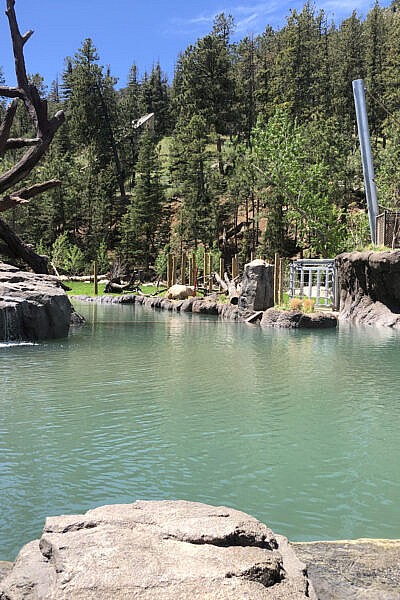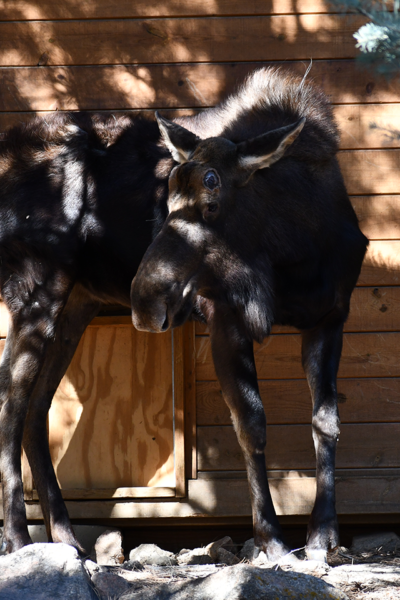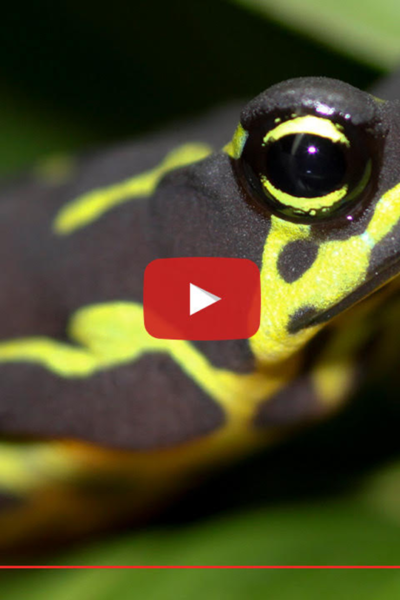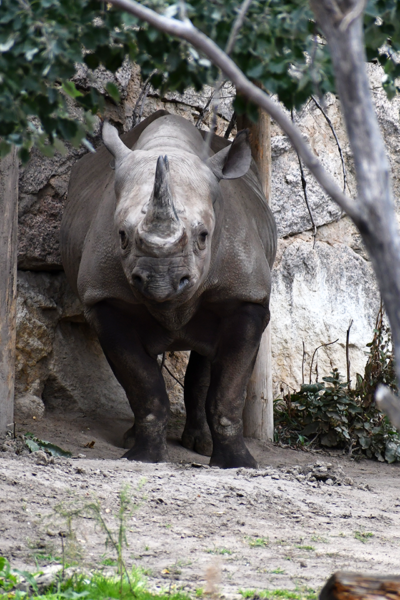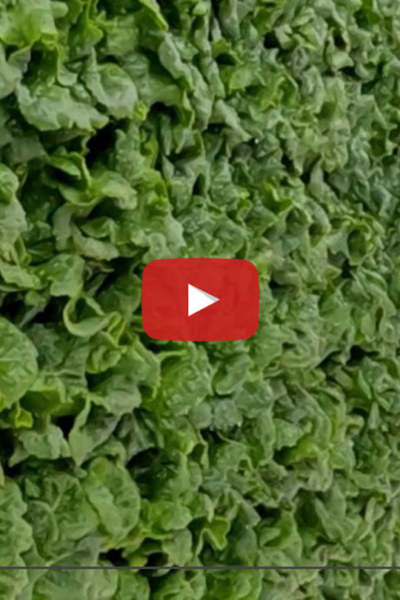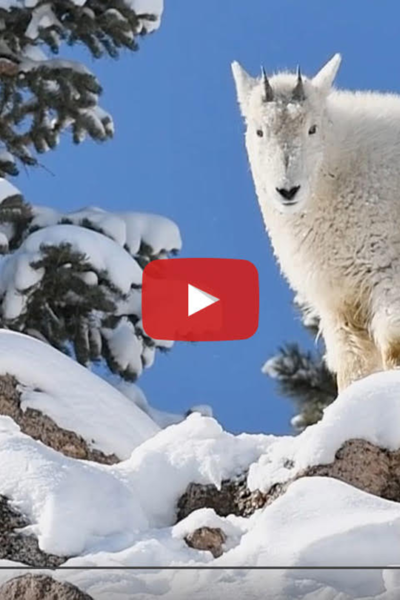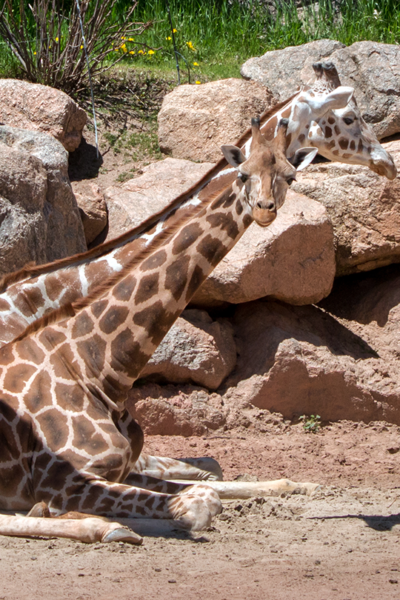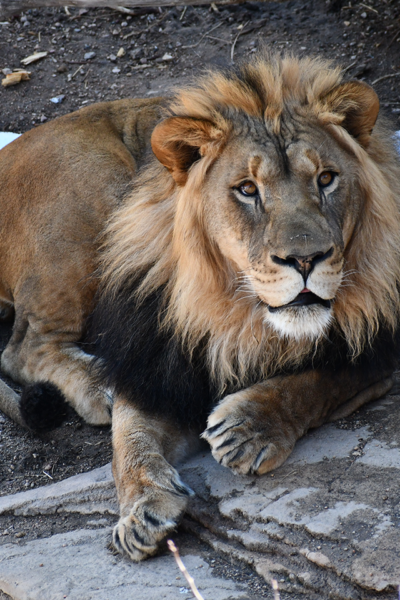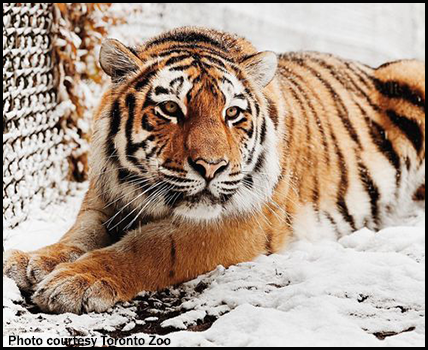Update: April 26, 2023
Last month, 2-year-old Alaska moose, Atka, had surgery to remove a toe with progressive bone degradation from his front left foot. Since then, the ‘Prince of Rocky Mountain Wild,’ as he’s called by his keepers, has been leaning on the trusting relationship he has with his care team to continue his recovery.

“We’ve been really impressed with Atka,” said Erika Furnes, Atka’s primary trainer and senior keeper in Rocky Mountain Wild. “When an animal needs to go through something major like this, there’s always a chance you could lose some of the trust you have built with them. We have to ask a lot of Atka right now, to give him the best possible care, and he’s doing a really great job.”
Since his surgery on Feb. 28, 2023, Atka has been voluntarily participating in his recovery, which started with 13 days of barn rest following his surgery. On April 10, Atka’s care team decided his wound was looking good enough for the big guy to go outside.
“The plan was always to listen to what Atka was telling us during his recovery, and to balance what’s best for him medically with what’s best for him as a moose,” said Furnes. “After nearly two weeks, he was ready to stretch his legs in the sunshine. By respecting his space and responding to his needs, we can maintain his trust, which allows us to provide better care for him long-term.”
Atka’s surgical sutures have come loose, which is not uncommon in this procedure when performed in domestic hoof stock like cows or goats, but because he voluntarily participates in hoof care, CMZoo’s veterinary team and Atka’s surgeon have been able to monitor his foot closely, and are happy and comfortable with how it is progressing. Atka also actively participates in training to receive antibiotic injections and oral medication for any discomfort he might be experiencing.
“We want to give him the rest, pain medications and antibiotics he needs while limiting the number of times he has to go under anesthesia,” said Furnes. “So far, we haven’t needed to anesthetize him since his surgery. I’ve been so proud of him. He’s still coming right over to his training panel and presenting his hoof on the block so we can get a close look at his surgical site. He takes oral medications in an apple in the morning, and so far, he has let us give him all necessary injections of long-lasting antibiotic.”
Atka and his care team have worked to build that relationship through positive reinforcement husbandry training. Moose are rare in zoos, and are almost unheard of south of Colorado. Because they’re so rare in human care, there aren’t as many training protocols, so CMZoo has helped blaze the trail for moose training everywhere.
“When you go through a tough chapter like this with an animal, it reminds you of how important the relationship-building and training you’ve done in the past is,” said Furnes. “Ongoing maintenance training is always important, but when an animal’s recovery depends on it getting certain care, the relationship of trust and the language you have built together make the process less stressful and more successful for everyone – animals and humans.”
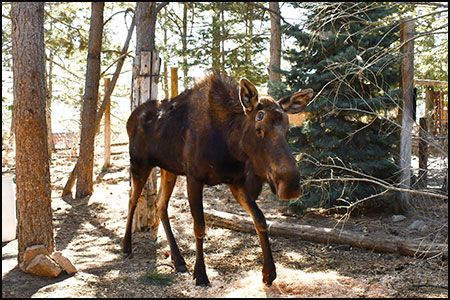
Atka is still healing and learning how to navigate on seven toes, instead of eight. Moose feet normally each have two toes that move independently to help the long-legged mountain mammals balance on rocky terrain. It is likely Atka will probably walk with an unusual gait for the rest of his life, since this necessary surgery has changed the structure of his foot – which is one-quarter of his foundation.
Animals are resilient, and Atka is adapting to his new foot. Keepers say that over the last four weeks of recovery, Atka has spent time lying down in comfy sand and shavings piles they’ve provided for him in his yard. He has been trotting, rubbing against trees, walking to his fence line to greet guests, enjoying fresh browse and wading in his pond. Guests might see Atka stumbling when he makes tight turns, favoring his one-toed foot, or curling it to rest it while he stands.
Atka has access to his barn and his yard for now, so visitors can stop by to wish him well in Rocky Mountain Wild. Atka’s team will continue to monitor him closely and make any adjustments to his medications, treatments or access to physical activity, with Atka’s best interests in mind.
____________________

Update: April 11, 2023
Atka, our 2-year-old Alaska moose, continues to recover from surgery on his front left hoof. Atka has been healing in his barn since his operation, and his care team has been happy with his participation in recovery care and rest. Now, his wound seems to be healthy enough that he got the veterinary go-ahead to stretch his long legs in the sunshine! Since yesterday morning, he has been exploring his yard and learning to navigate the terrain with just one toe on his front left foot.
Atka will take turns in his barn and out in his yard. Guests will notice Atka ‘curling’ that foot to rest it, working harder than usual to find his footing sometimes, and lying down to rest more frequently. The resilient young moose seems to be getting the hang of it already. He has been trotting, rubbing against trees, walking to his fence line to greet guests, enjoying fresh browse and wading in his pond between resting in his soft beds of sand and shavings. He even felt confident enough with his one-toed front hoof to successfully stand on three feet and use a back hoof to scratch the spots where he recently shed his antlers.
Atka’s surgical sutures have come loose, but because he voluntarily participates in hoof care, our veterinary team has been able to monitor his foot closely as it heals. Atka also receives voluntary antibiotic injections and oral medication for any discomfort he might be experiencing.
He’s making great strides with the support of his Rocky Mountain Wild and veterinary care team, but we’re not out of the woods just yet. Atka’s team will continue to monitor him closely and make any adjustments to his medications, treatments or access to physical activity, with Atka’s best interests in mind.
Next time you’re in Rocky Mountain Wild, stop by to say hello to Atka and wish him well as he continues his recovery. To read more about Atka’s surgery and other updates, keep scrolling down on this page.
____________________
Update: March 28, 2023 4:30 p.m. MT
Atka has been out of surgery for a few hours and seems to be doing well. The team is cautiously optimistic about the outcome of the procedure and Atka’s recovery from the anesthesia so far. Since he woke up, Atka’s care team has seen him stand for a short while and lie back down with good control. Now, he’s resting in his barn.
During his recovery, he may be in his barn for quiet time, but will also be given the option to move around as much as he’s comfortable. We are committed to Atka’s recovery and care as he steps into a life with seven toes. We will share updates on Atka periodically during his recovery process on the Zoo’s social media channels.
____________________
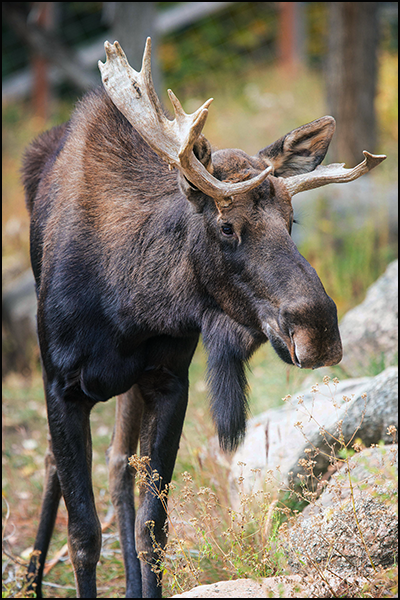
March 28, 2023
Cheyenne Mountain Zoo’s veterinary and animal care teams are partnering with Colorado State University Veterinary Teaching Hospital to remove a progressively problematic toe on Atka, CMZoo’s 2-year-old Alaska moose today, Tues., March 28, 2023.
The young male moose has experienced ongoing issues with his front left hoof and toe. Atka came to CMZoo at 8 weeks old in July 2020, after he was unfortunately orphaned in the wild in Alaska at around only six days old. Alaska Zoo cared for him until he was old enough to travel to CMZoo, where he has lived ever since.
Shortly after he arrived in 2020, his team discovered an abscess that had been growing in his front left toe and had become infected and needed treatment. Infections of this type in a young moose in the wild have the possibility of being fatal. Fortunately for Atka, the medical treatment his care team provided was successful, but the abscess created a hole which his body naturally filled with scar tissue. That changed the structure of his toe permanently, which gave Atka a unique gait with intermittent limping that didn’t always prove to be painful. Based on sensitivity tests during hoof care training, it seems the pain would come and go, and the presence of a limp didn’t always indicate he was in pain.
The team noticed him limping significantly and more consistently in February 2023. Atka voluntarily participates in hoof care, including a behavior for hoof x-rays. In February, the x-rays revealed significant bone degradation, compared to a November 2022 x-ray, in his front left outside toe, where the abscess was years before. After careful consideration, CMZoo’s veterinary, animal care and leadership teams decided together that a toe amputation was Atka’s best chance moving forward. In the meantime, Atka is receiving medication for pain.
“We know that animals can sometimes repair themselves better than we can, so we tend not to intervene too aggressively if we do not need to,” said Dr. Eric Klaphake, head veterinarian at CMZoo. “Our former moose, Tahoma, had a hoof issue that his body remedied naturally with the assistance of voluntary trained hoof trims, but Atka is experiencing progressive bone damage, which Tahoma did not. After monitoring and helping him with pain management, we’ve reached the point at which medical treatment and hoof care cannot stop further bone loss and the pain associated with it, and surgical correction is the best next step.”
The procedure will require Atka to go under anesthesia, which always has risk, but is riskier for a larger animal and for those classified as ruminants, like cows, that have multi-chambered stomachs. Removing the toe of an animal will inevitably alter its gait and cause it to rely more on other toes, hooves and limbs. The surgery team has performed similar and more complicated procedures successfully in the past, and CMZoo and CSU Veterinary Teaching Hospital have a long history of saving animals together. The team is cautiously optimistic that this procedure will get Atka on the path for a long and healthy life, but the surgery won’t likely completely correct his gait issues.
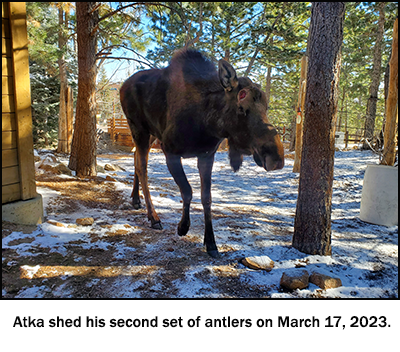
Planning for a young moose’s recovery involves embracing the unknown and preparing for whatever Atka decides to do. His team will work to keep his wound as clean and dry as possible for a feisty moose during a muddy season, and will balance his need to stretch his legs with the desire to keep him relatively calm as he recovers.
“Our Atka certainly hasn’t had the easiest life, but he has been resilient and determined since day one,” said Rebecca Zwicker, animal care manager in Rocky Mountain Wild. “After being orphaned and developing that infected abscess so young, we have seen him come through tough situations that would likely have been fatal without our support. We’ve helped him along this far, and we’re committed to helping him through this. We appreciate everyone rooting for him. Hopefully with the removal of this toe, he can put this whole abscess chapter behind him.”
The surgery is scheduled to take place today (Tues., March 28) at CMZoo. CMZoo will share updates on Atka periodically during his recovery process on the Zoo’s social media channels. Guests may not see Atka in his yard as often while he recovers.
Back to The Waterhole


